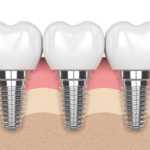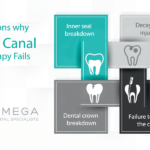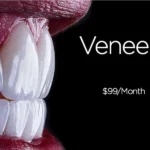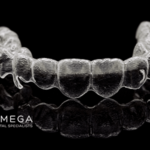Recent Posts
Is It Possible to Fix a Cracked Tooth?
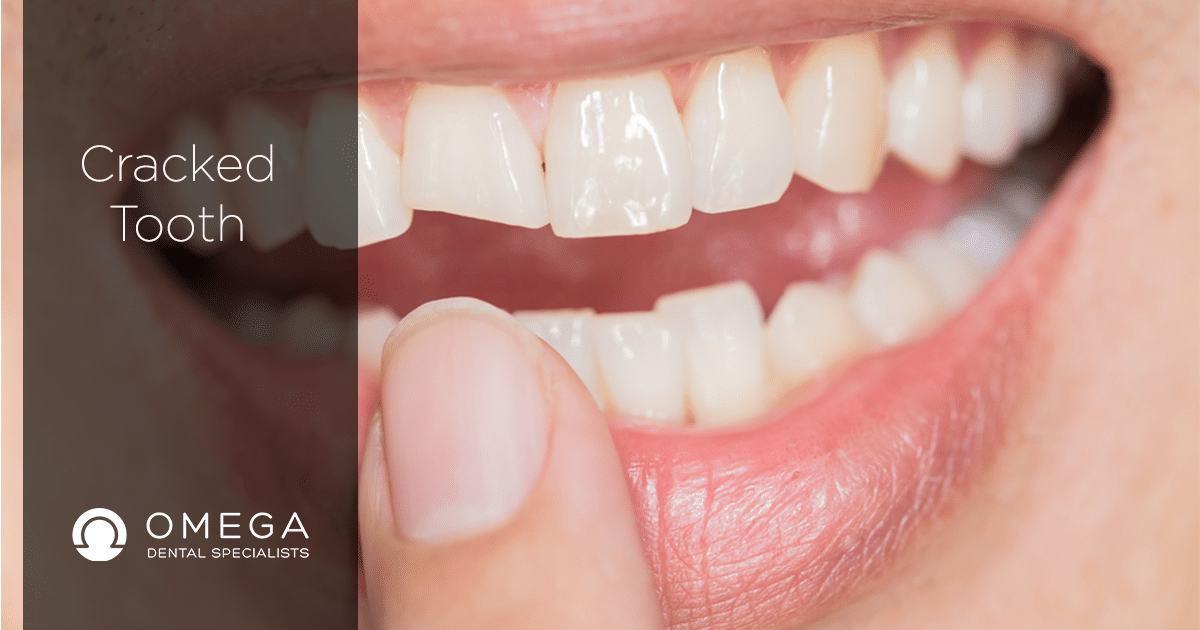
There are many ways that a tooth can get damaged or cracked. If this happens to you, you need to get that tooth examined as soon as possible. With early treatment, not only can a tooth be saved but you can also prevent additional damage to the tooth (and, possibly, to surrounding teeth), infections, periodontal disease, and the pain, and discomfort that usually accompany damaged teeth.
A cracked tooth can be unsightly and even cause a toothache. However, an early diagnosis and root canal can save your cracked tooth. We know how to diagnose your symptoms and hopefully keep your teeth. Smiles are created to last—especially because the enamel of our teeth is the strongest substance in our body. However, wear and tear of everyday life can cause damage, such as cracks. Therefore, it is important to seek assistance right away.
Table of Contents
How Would You Know If Your Tooth Has Been Cracked?
There are many symptoms of a cracked tooth. Most common symptoms are:- spontaneous pain
- Pain when you put pressure on that tooth
- After drinking cold water
- After drinking or eating hot food
- Fractured Cusp: a fraction of the chewing surface is breaking loose.
- Craze Lines: Very small cracks on the outer part of the enamel.
- Cracked Tooth: a crack from the chewing surface extending vertically to the root.
- Vertical Root Fracture: cracks are going from the root to the chewing surface.
- Split Tooth: a tooth left untreated; it usually can’t be saved.
Is It Possible to Fix a Cracked Tooth?
As we mentioned before if there is no irreversible damage to the dental pulp, a simple cosmetic dental repair is enough to take care of the problem. If the fractured has involved the dental pulp, the treatment is more complex and you need to contact your dentist as soon as possible. There are many types of cracks that can happen to teeth, the treatment, as well as the outcome for your particular situation, depends on the kind of trauma, the location and the extent of the crack. These are the six traditional procedures: 1- Dental Bonding Composite bonding can be used to repair decayed, chipped, cracked, misshapen, discolored, and gapped teeth. The procedure can last about ten years. No anesthesia is required, in general. One of the most common dental injuries is chipped teeth. Most of these teeth can be repaired by reattaching the broken tooth through bonding or by attaching a crown if there is no dental pulp exposure or trauma to the blood circulation of the dental pulp. See the endodontist near you as soon as you can after the injury to prevent it from worsening. 2- Veneers Veneers, usually made of porcelain, are covers for the teeth. They’re bonded to the fronts of teeth, lasting about 30 years. Not suitable for teeth grinders, veneers can go multiple teeth. 3- Crowns If a tooth is badly damaged or pain is experienced when chewing, a custom-made crown may be a good option. It’s a protective “cap” often preventing extractions and restoring functionality/normalcy. 4- Root Canal A crack extending into the pulp of a tooth may best be root canal treated. This involves cleaning out the compromised tooth matter and removing the nerve permanently. A crown is then provided. 5- Dental Implants For teeth that need to be extracted, a dental implant may be the best solution. These synthetic teeth use bio-compatible titanium and are embedded into your jawbone. They can last a lifetime if properly maintained. 6- All-on-4 Dental Implants This is a special alternative to dentures. It has several advantages over traditional implants: use only four implants per arch; usually, require no bone grafts; and have a 95% success rate.What Are the Repercussions/Consequences of Cracked Teeth?
In general, a dental exam & X-rays will best determine the prognosis of cracked teeth. One possibility: “cracked tooth syndrome”—i.e.., a crack, usually on molars, too tiny for X-ray detection or gum-hidden. A common symptom is erratic/in constant pain when chewing.What Should You Do After Cracking A Tooth?
Go to your dentists as soon as possible to have that tooth examined to avoid further damage/disease. “Cone beam X-rays” is one of the several diagnostic tools that can assess damage to any tooth. Digital X-rays, furthermore, can provide high-quality 3-D medical imaging. Once a diagnosis has been rendered, decide what dental procedure works best for you.Why Do Teeth Crack?
Although strong, tooth enamel is damaged by playing sports without a mouth guard; chewing on ice, hard candy or bones; drinking too much soda pop (which leeches calcium from bones); consuming acidic drinks; calcium deficiencies; involvement in accidents and altercations/attacks. Cavities & tooth decay can also weaken teeth, thus making them more vulnerable.What’s Periodontal Disease & How Is It Related to Tooth Cracks?
Gum or periodontal disease can set in because of gum inflammation or infections capable of damaging both the tissue and bones that support teeth. A more severe form of the disease is periodontitis. As their support system weakens, teeth can more easily sustain injuries/degradation—sometimes leading to cracks, chipping and teeth falling out. Addressing the problem early can prevent tooth cracks, chipping, and extractions. Symptoms include bleeding or swollen gums, bad breath, painful chewing, and loose teeth.What’s The Cost of Repairing Cracked or Damaged Teeth?
The cost of repairing teeth depends on what procedure(s) you go with/need, how many teeth are involved and how badly damaged/cracked they are. The more that’s involved, the higher the cost. For example, dentures are cheaper than All-on-4 Dental Implants. Then again, the latter needs less maintenance and offers a more comfortable experience.Is It Possible To Save A Fractured Tooth?
In General, dentists cannot re-connect broken or cracked teeth; also, unlike bones, teeth cannot repair themselves once cracked. This is why it’s important to protect your teeth. Partially damaged/cracked teeth, though, can usually be saved using the procedures above that fit the “mold.” Exceptions are cracks that go deep and teeth already loose, damaged or resting on diseased gums/bones.Why Do Cracked Teeth Hurt?
You need to understand the anatomy of the tooth to know why a cracked tooth hurts. The outer portion of your tooth is called enamel, and the hard part of your tooth underneath is called dentin. However, the soft inner tissue is called dental pulp. The dental pulp is where the tooth’s blood vessels and nerves are located. When there is a crack in the outer portion of the tooth, the inner pulp can become inflamed, irritated and sensitive to temperature. Over time, the broken tooth could hurt more and toothache get more constant. Major cracks may lead to infection of the root canal and cause bone loss and gum disease. It is important to take care of the problem as soon as possible. As long as the enamel and dentin, the hard parts of teeth, are intact and healthy, the vulnerable part of teeth, the pulp, remains protected from pain and inflammation. Once this hard outer layer is compromised, though, not only pain but infections and disease can more easily set in. Cracked teeth hurt because a nerve has been exposed or because gum tissue is inflamed, sore or infected. The pain is usually worsened by chewing or because of an infection or cold/hot foods/beverages. The pain can become more pronounced or prevalent if no dental care is sought and if damage/disease is unattended.Are Chipped Teeth a Serious Problem?
Teeth chipping is a common problem—that’s the bad news. The good news is that they can often easily be repaired, such as by having the piece reattached or by bonding a filling or crown to the damaged tooth. Although this problem is fixable, time is of the essence. Unattended, the tooth becomes more vulnerable, especially if the pulp is exposed. Also, the tooth may become fractured or cracked in time.How Is a Cracked Tooth Treated?
The location, type, and extent of the crack determine what treatments may be applied to your cracked tooth. A Fractured Cusp, For Example, can be repaired with a crown or filling. A tooth crack that extends into the pulp may be treated with a root canal and a crown, though a crack beneath the gum-line will require the tooth to be extracted. A split tooth may be partially saved, but a vertical fracture will likely require an extraction. Unfortunately, cracked and fractured teeth may continue to crack even after treatment since teeth don’t heal like bones. Then again, with proper treatment, the chances for further damage can be reduced. How soon you get treatment after you notice a problem will greatly affect success.After cracked tooth treatment, will the tooth heal completely?
Unlike broken bones, fractures in teeth do not heal. Even with treatment, some cracks can progress and separate which will eventually result in loss of teeth. Placing a crown on the tooth provides protection but does not guarantee success. The treatment you receive is important since it relieves pain and reduces the chance the crack worsens. Once it is treated, most broken teeth continue to function and provide stable chewing surfaces. Talk to our endodontists about your diagnosis and recommendations for treatment. You may not be able to prevent every tooth crack, but taking a few simple steps will make your teeth less susceptible. Keep these tips in mind:- Do not chew on ice or other hard objects
- Avoid grinding or clenching teeth; Consider a mouth guard if you grind your teeth while you sleep
- Wear a mouthguard to protect your teeth when playing contact sports
How Can I Prevent Tooth Cracks?
Here’re some suggestions to keep in mind:- Avoid/prevent grinding teeth—use a mouthguard, if necessary
- Don’t chew hard things (ice, bones, hard candy, etc.)
- Always wear a mouthguard in sports
- Avoid foods known to weaken teeth (soda pop, alcohol, ice-cold water, etc.)
- Make sure you’re getting enough calcium in your diet.
- Wear a helmet when indicated
- Get adequate dental care
- Practice good dental hygiene
What Are Craze Lines on My Teeth?
Craze lines are small cracks that are only on the outer enamel of your teeth. These cracks are very commonly seen in adult teeth. These craze lines are shallow and cause no pain. In most cases, craze lines are of no concern beyond appearance issues.What is a Fractured Tooth Cusp?
When part of the tooth’s surface for chewing breaks, usually around a filling, this is called a fractured cusp. This particular problem rarely causes damage to the pulp of the tooth and does not cause much pain. A dentist will place a filling or crown over the tooth to protect it from further harm. If you have cracked a tooth, you could find that drinking cold drinks or breathing through your mouth is painful. Bite on clean, moist gauze to relieve symptoms until you can make it to the dentist’s office. Do not use topical pain medicines or place aspirin on the tooth to eliminate the pain as that can make treatment more difficult.What is The difference between Cracked Teeth and Fractured Teeth?
A cracked tooth occurs when a crack ranges vertically from the tooth’s surface towards the root. The tooth does not separate into pieces, but the crack may spread. It is important to diagnose this early to save the tooth. When the crack spreads into the pulp, the tooth will require a root canal for treatment and crown. When the crack extends below the gum line, the problem is not treatable, and the tooth will not be savable. At this point, the tooth must be extracted. This is the reason early treatment is so important. If a cracked tooth is not treated properly, it will become worse over time and eventually result in tooth loss. Early treatment can save these teeth.What Is a Split Tooth?
The long-term progression of a cracked tooth is called a split tooth. This is identified by a crack with segments that could be separated. These teeth cannot be saved in one piece. Depending on the position of the crack will determine if any part of the tooth is savable. Endodontic treatment can save part of the tooth.What Is A Vertical Root Fracture?
If the fractured has extended to the root it is called vertical root fracture. Most of the time the fracture starts from the crown to the apex of the root canal. These teeth have more symptoms like sensitivity to cold, and heat or when patient put pressure on that area. In some cases, vertical root fracture begins down at the root. These cracks extend upwards toward the surface. These fractures do not always show symptoms and may sometimes not be noticed. These are usually discovered when the surrounding bone or gum becomes infected. If the fracture is significant, preferred treatment options include extraction of the tooth in question. Surgery is occasionally appropriate when the tooth is savable.
Conclusion
If you are encumbered with damaged or cracked teeth, it’s in your best interest to seek dental care as soon as possible. Not only can dental care help save your teeth but it can also prevent or properly treat gum disease, which can have serious repercussions, such as eventually losing all your teeth or, what’s worse, developing medical problems in other parts of your body (like your heart).
-
November 06, 2019
Use Endodontic Microscope in Contemporary Endodontics
-
November 10, 2018
Is It Possible to Fix a Cracked Tooth?
-
November 10, 2018
Is There an Alternative to Root Canal Treatment?
-
November 03, 2018
Abuse of Antibiotics in Dentistry
-
October 31, 2018
Can Root Canal Cause Sinus Infection?
-
August 13, 2018
What Is The Apexification?

